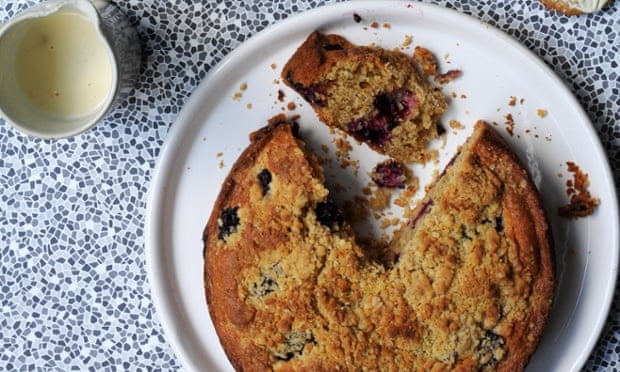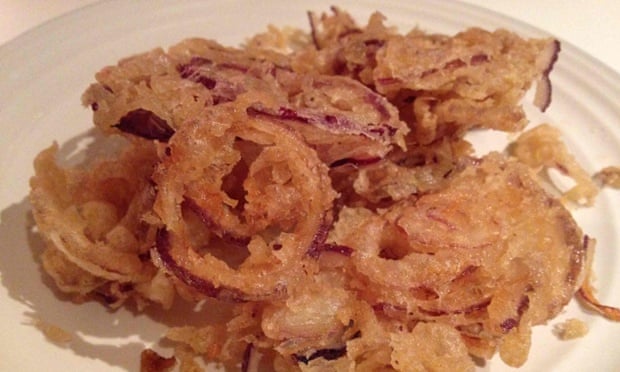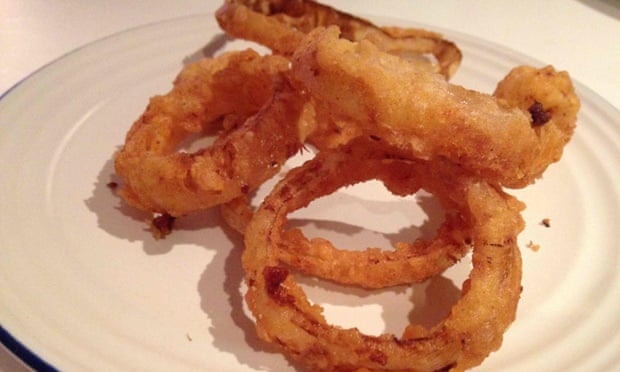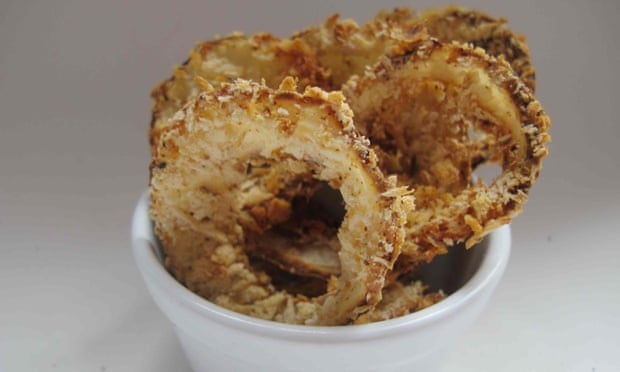These caramelised jerk chicken wings are very moreish, and the Cajun Remoulade Dipping Sauce makes the perfect accompaniment.
Serves 4-6
You will need
1.8 kg chicken wings, halved at the joints, tips removed
½ onion, chopped
35g spring onions, sliced
7 garlic cloves, finely chopped
4 habanero peppers, deseeded and chopped
3 tbsp chopped fresh thyme leaves
2 tsp dried thyme
2 tbsp sea salt
1 tbsp freshly ground black pepper
1 tbsp ground allspice
1 tsp ground cinnamon
2 tsp ground cumin
1 tsp chilli powder
1 tsp freshly grated nutmeg
4 tbsp vegetable oil
5 tbsp soy sauce
3 tbsp brown sugar
120ml freshly squeezed lime juice
For the Cajun Remoulade Dipping Sauce:
500g mayonnaise
2 tbsp ketchup
2 tbsp English mustard
1 tbsp chopped fresh flat-leaf parsley
1 tbsp cayenne pepper
1 tbsp freshly squeezed lemon juice
2 tsp prepared horseradish
3 garlic cloves, finely chopped
1 tsp Worcestershire sauce
1 tsp celery salt
1 tsp paprika
Method
Put the onion, spring onions, garlic, habanero peppers, fresh and dried thyme, sea salt, black pepper, allspice, cinnamon, cumin, chilli powder, nutmeg, vegetable oil, soy sauce, brown sugar and lime juice in a blender and blend until the marinade is completely smooth.
Place the chicken in a large bowl, pour the marinade over and toss to coat completely. Cover the bowl with cling film and marinate in the refrigerator overnight or for at least eight hours.
Preheat the oven to 230°C (450°F) Gas 8. Line 2-3 baking sheets with foil and grease with cooking spray or vegetable oil. Place the chicken on the baking sheets and reserve the marinade left in the bowl. Bake in the preheated oven for 25 minutes.
Brush half the reserved marinade over the chicken and turn the wings over. Bake for a further 15 minutes.
Turn the chicken again and brush on the remaining marinade. Bake for a further 10-15 minutes until the chicken is tender and caramelised and the juices run clear when the thickest part is pierced to the bone.
Rest the wings on the baking sheets for five minutes before transferring to a serving platter.
To make the dipping sauce:
Combine all ingredients in a blender or food processor.
Refrigerate before serving.
Taco wings
The rich, spicy Mexican taste of these wings comes from a combination of taco seasoning, red wine vinegar and hot pepper sauce. Enjoy with a ranch dressing dip, or debone the chicken and make tacos.
Serves 4-6
You will need
1 sachet taco seasoning mix
3 tbsp canola oil
2 tbsp red wine vinegar
1 tsp hot pepper sauce
1.8kg chicken wings, halved at the joints, tips removed
Vegetable oil, for frying (optional)
Ranch Dipping Sauce:
75g mayonnaise or Greek yoghurt
75ml milk
1 tbsp ranch seasoning (see below)
1 tsp hot sauce (optional)
Ranch Seasoning (see note):
35g dried buttermilk or powdered milk
2 tbsp dried parsley
1½ tsp dried dill
2 tsp garlic powder
2 tsp onion powder
2 tsp dried onion flakes
1 tsp freshly ground black pepper
1 tsp dried chives
1 tsp salt
Method
Preheat the grill to medium, or heat up a barbecue. Combine the taco seasoning, oil, vinegar and hot pepper sauce in a large resealable plastic bag. Add the chicken, seal the bag and shake to coat.
Grill the chicken, turning occasionally, for 15-20 minutes or until crisp and golden and the juices run clear when the thickest part is pierced to the bone. Alternatively, preheat the oil in a deep fryer set to 180°C (350°F) and fry the chicken in batches. Serve with the Ranch Dipping Sauce (see below), guacamole and tortilla chips.
To make the dipping sauce:
Place the mayonnaise or yoghurt, milk and ranch seasoning in a small bowl and whisk to combine. Add the hot sauce for a Hot Pepper Ranch Dipping Sauce.
Note
Three tablespoons of this ranch seasoning is the equivalent of one packet of store-bought seasoning mix. Any unused seasoning can be stored in an airtight container.
Baked mojito wasabi wings
These chicken wings are an East-meets-West fusion. A mixture of a classic Mojito mint flavour and wasabi produces a hot-meets-cool taste.
Serves 4-6
You will need
1.8 kg chicken wings, halved at the joints, tips removed
1 tsp salt
1 tsp freshly ground black pepper
35g cornflour
150ml ponzu sauce
2 tbsp runny honey
60ml white rum
1 tsp red chilli sauce, such as sriracha
2 tsp garlic powder
3 tbsp sesame seeds
Vegetable oil, for frying
For the Mint-Wasabi Dipping Sauce: 175 ml Greek yoghurt
¼ tsp wasabi powder
2 tbsp finely chopped coriander
1 tbsp freshly squeezed lime juice
2 fresh mint leaves, finely chopped
Method
Sprinkle the chicken on all sides with salt and pepper. Dust lightly with cornflour and rub to coat.
Combine the ponzu, honey, rum, chilli sauce, garlic powder and two tablespoons of the sesame seeds in a large bowl, stirring well. Add the chicken wings and toss to coat. Cover the bowl with cling film and place in the refrigerator for 10 minutes.
Remove the wings from the marinade, allowing the excess to dip back into the bowl. Set the wings aside.
Pour the remaining marinade into a small saucepan. Cook over a medium-high heat for 8-10 minutes, stirring frequently, and reduce until thickened and syrupy.
Preheat the oil in a deep fryer set to 180°C (350°F).
Preheat the oven to 220°C (425°F) Gas 7. Line 2-3 baking sheets with foil.
Fry the wings in batches for about 10 minutes per batch, until the coating is golden brown and the juices run clear when the thickest part is pierced to the bone.
Arrange the fried chicken wings on the baking sheets. Brush the wings with the thickened marinade, turn them over, and brush with marinade on the other side. Bake in the preheated oven for 10 minutes, then baste again with marinade and cook for a further five minutes. Remove from the oven and sprinkle with the remaining sesame seeds.








































